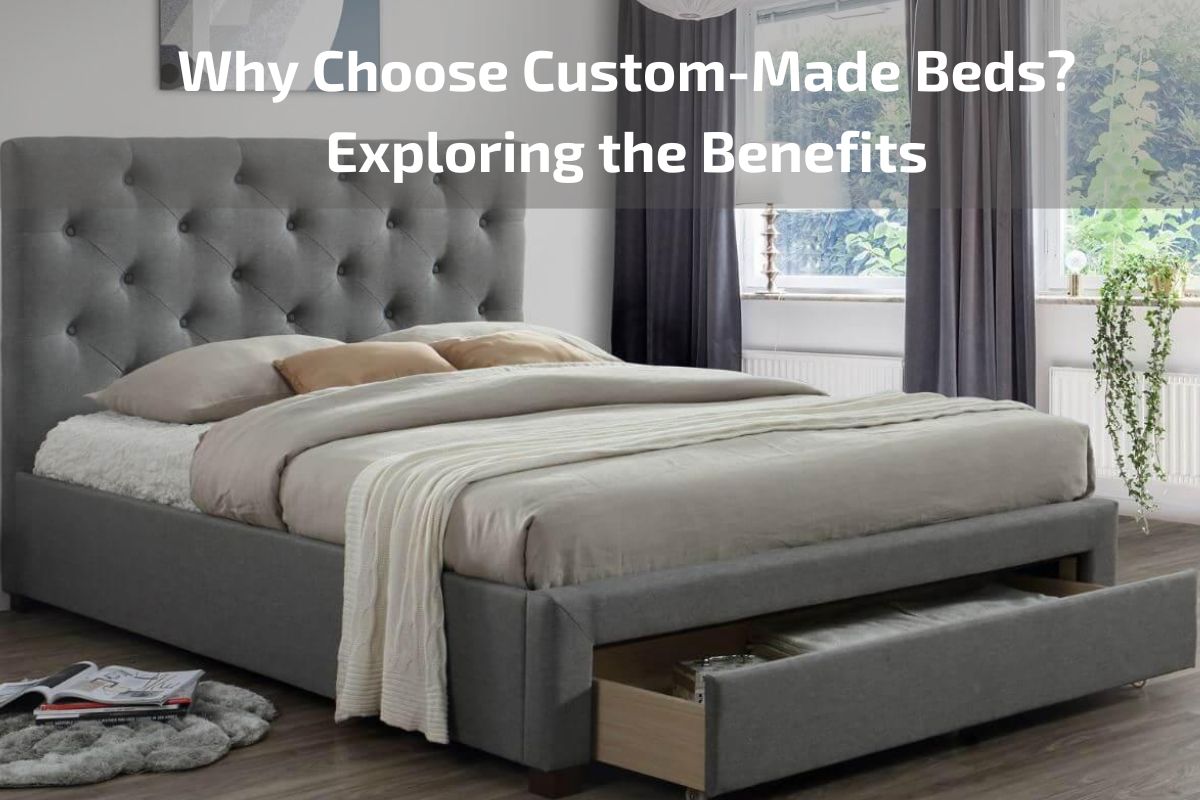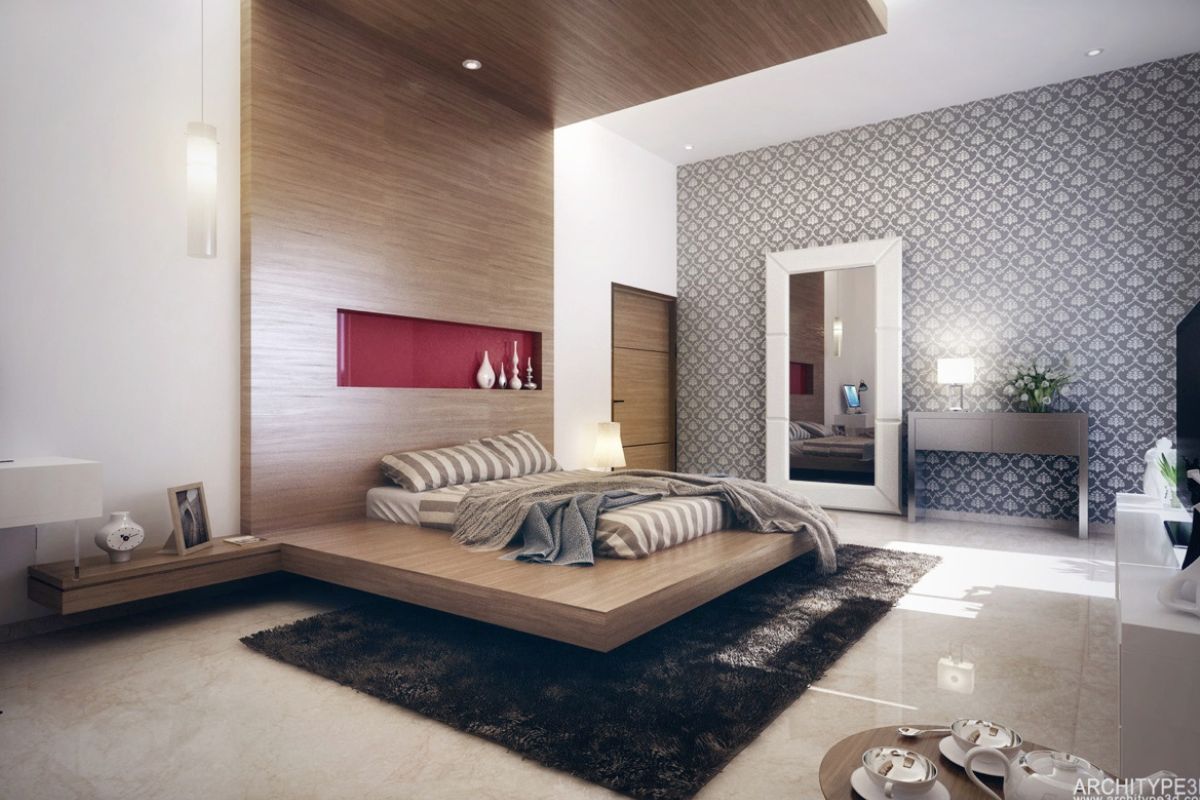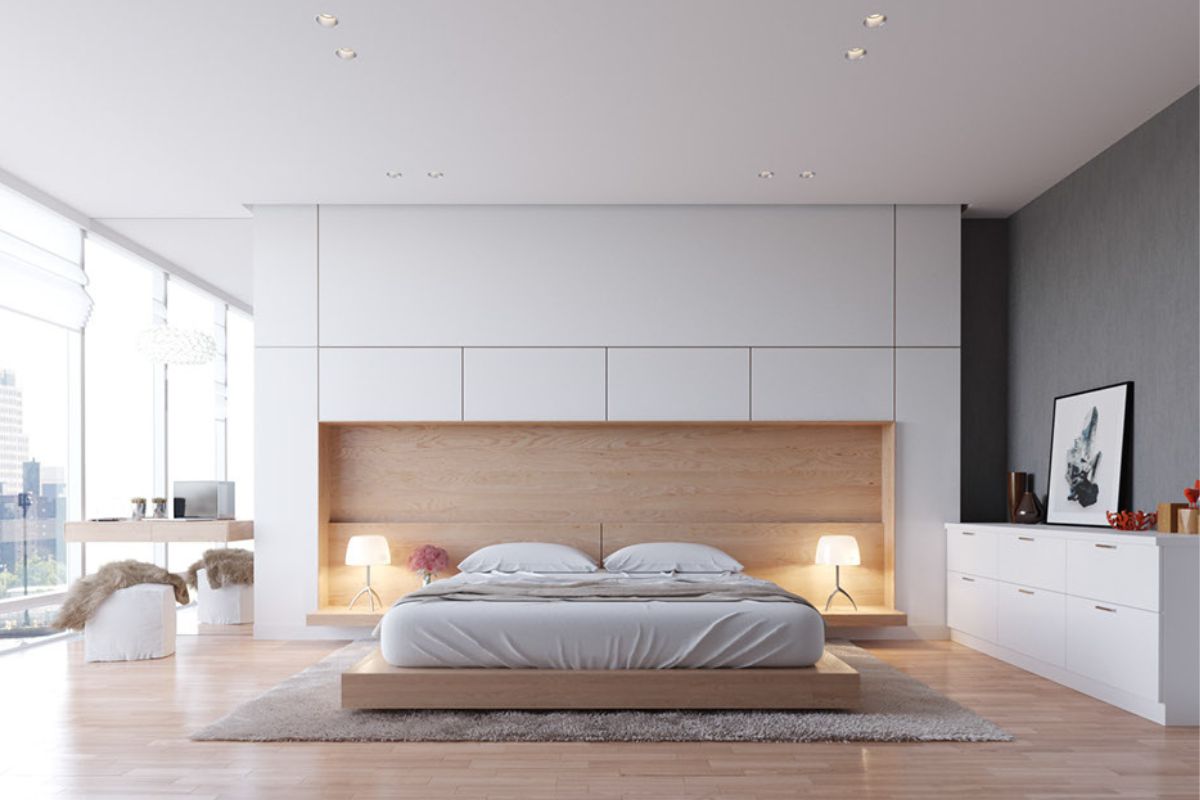Why Choose Custom-Made Beds? Exploring the Benefits

When it comes to the most important piece of furniture in your home—the bed—there’s no one-size-fits-all solution. Your bed is more than just a place to sleep; it’s a sanctuary where you can unwind, rejuvenate, and find comfort after a long day. This is where the allure of custom-made beds shines. In a world where personalization is prized, custom-made beds offer a tailored approach to sleeping in luxury. In this article, we’ll delve into the myriad benefits of choosing custom-made beds over off-the-shelf options. From personalized design to unparalleled comfort and craftsmanship, custom beds elevate the sleeping experience to new heights. Join us as we explore the reasons why more and more individuals are opting for the bespoke beauty of custom-made beds.
Definition and differentiation from standard beds
A standard bed typically refers to a traditional bed frame with a mattress and possibly a box spring, designed for sleeping or resting. On the other hand, “non-standard” beds encompass a wide range of alternatives that deviate from this conventional setup. These can include:
Platform Beds: These beds consist of a solid platform onto which a mattress is placed directly, eliminating the need for a box spring. They often have a sleek, modern design.
Futons: Originating from Japan, futons are mattresses that can be folded and stored away during the day, or used as seating. They’re often placed directly on the floor or on a futon frame.
Murphy Beds: Also known as wall beds, Murphy beds can be folded up against a wall to save space when not in use. They’re commonly found in small apartments or multipurpose rooms.
Bunk Beds: These beds feature two or more mattresses stacked vertically, making them ideal for maximizing sleeping space in small bedrooms or for accommodating multiple sleepers.
Trundle Beds: These beds consist of a main bed frame with a secondary bed that can be rolled out from underneath, providing an extra sleeping space that can be easily tucked away when not in use.
Daybeds: Daybeds resemble sofas during the day but can be used as beds when needed, making them versatile options for guest rooms or multipurpose spaces.
Benefits of Custom-Made Beds
Custom-made beds offer a range of benefits compared to standard, mass-produced options. Here are some advantages:
Personalization: Custom-made beds can be tailored to meet individual preferences and needs. From the mattress firmness to the bed frame design, customers have the flexibility to choose features that align with their specific requirements for comfort and style.
Optimized Size: Standard beds may not always fit perfectly into a room’s dimensions or cater to unique space constraints. Custom-made beds can be designed to fit any space, whether it’s a small apartment, an attic with angled ceilings, or an irregularly shaped room, maximizing the use of available space.
Quality Materials: Custom bed manufacturers often prioritize using high-quality materials and craftsmanship, ensuring durability and longevity. Customers can select materials that suit their preferences, whether it’s hardwood for the bed frame, organic cotton for the mattress, or hypoallergenic fabrics for bedding.
Health Benefits: Custom-made beds can be customized to address specific health concerns or sleep-related issues. For example, adjustable bed frames can provide relief for individuals with back pain or sleep apnea, while mattresses with orthopedic support can promote better spinal alignment and alleviate pressure points.
Unique Design: Custom-made beds allow for creative expression and unique design possibilities. Customers can collaborate with designers or artisans to create one-of-a-kind pieces that reflect their personality and complement their interior decor, enhancing the aesthetic appeal of the bedroom.
Long-Term Investment: While custom-made beds may have a higher upfront cost compared to mass-produced options, they often represent a worthwhile investment in terms of quality, comfort, and longevity. A well-designed and carefully crafted custom bed can provide years of restful sleep and aesthetic enjoyment, making it a valuable addition to any home.
Factors to Consider When Designing a Custom Bed
When designing a custom bed, several factors should be taken into consideration to ensure that the final product meets your needs and preferences. Here are some key factors to consider:
Space Constraints: Evaluate the dimensions of the room where the bed will be placed, including ceiling height, floor space, and any architectural features or obstacles that may impact the bed’s design and placement.
Sleeping Preferences: Consider your personal sleeping habits and preferences, such as preferred mattress firmness, sleep position, and any specific health concerns or conditions that may require special features like adjustable frames or orthopedic support.
Aesthetic Preferences: Determine the desired style and aesthetic of the bed, taking into account factors such as material, color, texture, and overall design aesthetic. Consider how the bed will complement the existing decor and furnishings in the room.
Functionality: Think about the intended use of the bed beyond sleeping. Will it be used primarily for sleeping, or do you need additional features such as storage drawers, built-in lighting, or a convertible design for multipurpose use?
Customization Options: Explore the various customization options available for the bed frame, mattress, bedding, and other components. This may include selecting specific materials, finishes, hardware, or accessories to tailor the bed to your preferences.
Budget: Determine your budget for the custom bed project, taking into account factors such as materials, labor costs, customization options, and any additional features or upgrades. Be sure to prioritize features that are most important to you within your budget constraints.
Quality and Durability: Choose high-quality materials and craftsmanship to ensure that the custom bed is durable, long-lasting, and able to withstand regular use over time. Consider factors such as material strength, construction methods, and warranty coverage.
Ergonomics and Health Considerations: Pay attention to ergonomic factors that can affect comfort and health, such as mattress support, alignment, and breathability. Factor in any specific health considerations or requirements, such as allergies, mobility issues, or chronic pain conditions.
Custom Bed Design Inspiration
Finding inspiration for a custom bed design can come from various sources, including interior design magazines, online platforms, furniture showrooms, and personal preferences. Here are some avenues to explore for custom bed design inspiration:
Interior Design Magazines and Websites: Browse through interior design magazines such as Architectural Digest, Elle Decor, or House Beautiful for inspiration on custom bed designs. Online platforms like Pinterest, Houzz, and Instagram are also great sources for discovering unique bed designs and creative bedroom decor ideas.
Furniture Showrooms and Design Centers: Visit furniture showrooms, design centers, and home decor stores to view a wide range of bed styles, materials, and customization options in person. Seeing different designs up close can help you visualize what you like and dislike in terms of aesthetics and functionality.
Custom Furniture Designers and Artisans: Collaborate with custom furniture designers, artisans, and craftsmen who specialize in creating bespoke pieces. They can work with you to understand your vision, preferences, and unique requirements, translating them into a custom bed design that reflects your personal style and taste.
Architectural Features and Influences: Draw inspiration from architectural features and design elements that resonate with you. Whether it’s the clean lines of modern architecture, the intricate details of traditional craftsmanship, or the organic shapes of nature, architectural influences can inspire creative bed designs that reflect your aesthetic sensibilities.
Cultural and Historical References: Explore cultural and historical references for inspiration on bed designs from different periods and regions around the world. From the minimalist simplicity of Japanese tatami beds to the opulent elegance of European canopy beds, drawing on cultural and historical influences can add depth and character to your custom bed design.
Personal Preferences and Lifestyle: Consider your own personal preferences, lifestyle, and needs when brainstorming ideas for a custom bed design. Whether you prefer sleek and modern aesthetics, rustic and natural materials, or luxurious and indulgent comforts, incorporating elements that resonate with your lifestyle can help create a bed that feels uniquely yours.
Maintaining and Caring for Custom Beds
Maintaining and caring for custom beds is essential to ensure their longevity, comfort, and appearance. Here are some tips for keeping your custom bed in top condition:
Regular Cleaning: Follow manufacturer’s instructions for cleaning the bed frame, mattress, and bedding materials. Dust and vacuum the bed frame regularly to remove dirt, dust, and debris. Use a mild detergent and warm water to spot clean stains on upholstery or fabric surfaces.
Mattress Rotation: Rotate and flip the mattress periodically to promote even wear and prevent sagging. This is especially important for mattresses with one-sided designs or specific comfort layers. Refer to the mattress manufacturer’s guidelines for recommended rotation schedules.
Protective Measures: Use mattress protectors, fitted sheets, and pillow covers to shield the mattress and pillows from spills, stains, dust mites, and allergens. Wash bedding regularly according to care instructions to maintain hygiene and freshness.
Proper Support: Ensure that the bed frame and foundation provide adequate support for the mattress and sleepers. Check for signs of wear or damage to the bed frame, slats, or support systems, and repair or replace them as needed to prevent sagging or instability.
Temperature and Humidity Control: Maintain a comfortable indoor environment with proper temperature and humidity levels to prevent moisture buildup, mold, and mildew. Use breathable bedding materials and consider investing in moisture-wicking mattress pads or toppers for added protection.
Avoiding Overloading: Avoid overloading the bed with excessive weight or pressure, such as jumping or sitting on the edges of the mattress, which can cause damage to the mattress springs or support system. Use caution when moving heavy furniture or objects near the bed to prevent accidental damage.
Professional Maintenance: Schedule regular inspections and maintenance checks with a qualified furniture technician or mattress specialist to assess the condition of the bed and address any issues promptly. Professional cleaning services may also be beneficial for deep cleaning upholstered bed frames or mattresses.
Storage and Transportation: Take precautions when moving or storing custom beds to prevent damage or distortion. Disassemble the bed frame if necessary and use protective covers or padding to safeguard delicate materials during transportation or storage.
Conclusion
In conclusion, custom beds offer a multitude of benefits, including personalized design, optimal functionality, and superior quality. By considering factors such as space constraints, sleeping preferences, aesthetic preferences, functionality, budget, quality, and health considerations, individuals can create bespoke sleeping solutions that meet their unique needs and preferences.






0 comments